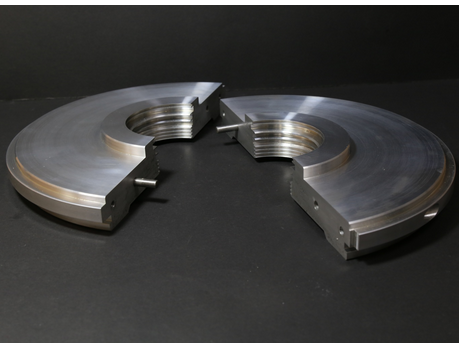Labyrinth seal for water pump
The labyrinth seal of the water pump is an effective sealing method. It achieves sealing of the fluid by setting a series of annular sealing teeth around the rotating shaft, forming a cut-off gap and an expansion cavity between the teeth. The following is a detailed analysis of the labyrinth seal of the water pump:
I. Sealing principle
The labyrinth seal uses a series of tortuous gaps and cavities to cause throttling and expansion of the fluid when it passes through, thereby consuming the energy of the fluid and achieving the purpose of preventing leakage. When the fluid flows through the gap of the labyrinth seal, its pressure and temperature will drop, while the flow rate will increase. Subsequently, the fluid enters the larger cavity formed by the two sealing teeth, where the flow rate drops and a vortex flow is formed, generating a certain amount of heat energy. As the number of gaps and cavities through which the fluid flows increases, and the gap value decreases, the flow rate and pressure drop of the fluid become larger and larger, until the pressure drops to approximately the back pressure, and the fluid no longer continues to flow out, thereby achieving sealing.
II. Structural features
Setting of sealing teeth: The labyrinth seal sets a number of annular sealing teeth around the rotating shaft in sequence, and these sealing teeth can be in the form of sealing sheets or sealing rings. The sealing sheet has a compact structure, while the sealing ring is composed of multiple fan-shaped blocks, which are pressed against the housing by spring sheets.
Intercept gaps and expansion chambers: A series of intercept gaps and expansion chambers are formed between the sealing teeth. These gaps and chambers are the key to the sealing effect of the labyrinth seal.
Non-contact design: There is a gap between the rotor and the shell of the labyrinth seal, and there is no solid contact, so no lubrication is required, thermal expansion is allowed, and it is suitable for high temperature, high pressure, and high speed occasions.
3. Advantages
Non-contact design: Reduces friction and wear, and extends the service life of the seal.
No lubrication required: Reduces maintenance costs and avoids environmental pollution by lubricants.
Strong adaptability: Labyrinth seals are suitable for harsh working conditions such as high temperature, high pressure, and high speed, and are widely used in equipment such as steam turbines, gas turbines, compressors, and blowers.
Simple structure: The structure of the labyrinth seal is relatively simple, and it is relatively convenient to install and maintain.
4. Precautions
Gap control: The gap of the labyrinth seal has a great influence on the sealing effect. Too large or too small a gap will affect the sealing performance. Therefore, the size of the gap needs to be strictly controlled during design and installation.
Material selection: The material of the sealing teeth needs to have good wear resistance, high temperature resistance and corrosion resistance to cope with harsh working environments.
Prevention of environmental pollution: When sealing flammable, explosive or toxic gases, special attention should be paid to preventing environmental pollution. An inflatable labyrinth seal can be used to pass inert gas into the gap to prevent gas leakage.





